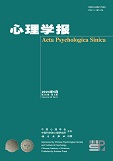Time is one of the fundamental dimensions of the world. Correspondingly, duration perception is also crucial for everyday activities. However, one’s emotional state distorts duration perception. Some timing researchers assume that such distortion reflects processes that allow individuals to adaptively respond to changes in their environment. In recent decades, a large body of studies examined the effect of basic emotion on duration perception. However, the results were mixed. Specifically, although some studies supported that basic emotions (fear, anger, disgust, sadness, happiness) prolonged duration perception compared to neutral stimuli, there were also contradictory results. Furthermore, the results of the comparisons among basic emotions were more mixed. Thus, we conducted a three-level meta-analysis and network meta-analysis to investigate the effect of basic emotion on time perception and moderating factors.
We conducted an exhaustive literature search using sequential strategies to locate studies that provide data on the effects of basic emotion on duration perception, the last literature update was on July 12, 2024. The three-level meta-analysis was conducted using the metafor package. The procedure was as follows: we calculated the standardized mean difference (g) in duration perception between basic emotions and neutral stimuli. Then, we performed a main effect test using a three-level random-effects model, tested moderator variables using a three-level mixed-effects model, and assessed publication bias using funnel plots, two-level Egger regression, three-level Egger regression, and the trim-and-fill method. The network meta-analysis was conducted using the netmeta package. The procedure was as follows: a random-effects model was used to fit the network model, followed by ranking the duration perception of basic emotions based on p-scores and calculating the league table; finally, model inconsistency was assessed using the full design-by-treatment interaction random-effects model and node splitting method.
A total of 3504 potential literature was retrieved. After screening, 36 articles met the inclusion criteria for meta-analysis. The three-level random-effects model found that the duration perception of basic emotions was longer compared to neutral stimuli, g = 0.24, 95% CI [0.13, 0.36], p < 0.001. Moderation analysis revealed that the type of basic emotion, age group, and time task were significant moderator variables. Additionally, main effect analyses conducted for each basic emotion individually revealed that the duration perception of happiness, fear, and anger was longer than that of neutral stimuli. In the network meta-analysis, we included only studies that used the time bisection method and samples of early adulthood individuals. The results revealed that duration perception was longer for fear and anger than for sad emotions.
Combining the three-level meta-analysis and the network meta-analysis, the following conclusions were drawn: Compared to neutral stimuli, fear, and anger emotions can consistently induce prolonged duration perception; additionally, the duration perception for fear and anger is longer than for sadness. This pattern aligns with the “adaptive” perspective, supporting the notion that the prolongation of duration perception by emotions is an adaptive outcome. The more important an emotion is for “harm avoidance,” the longer the duration of perception it induces.




